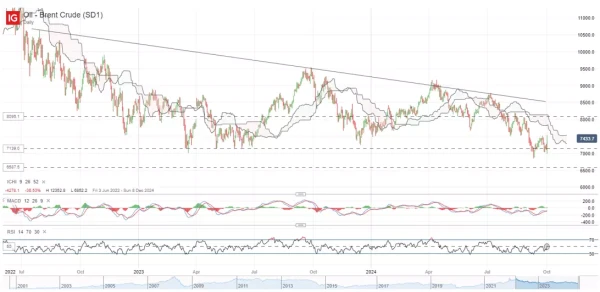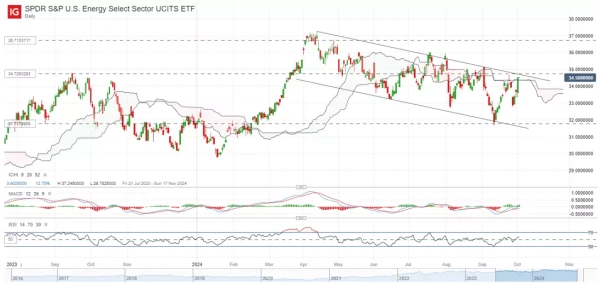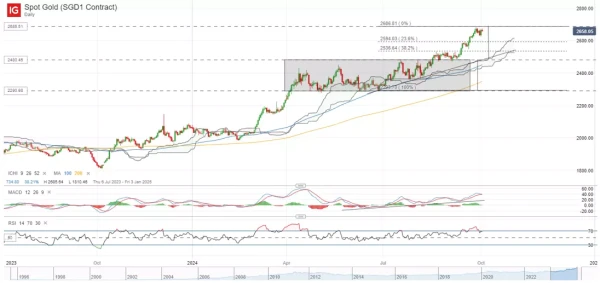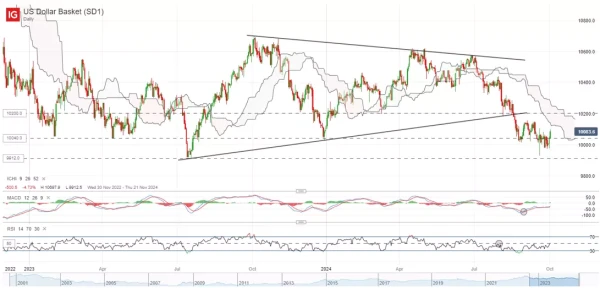Geopolitical tensions ratcheting up in the Middle East. What’s next?
Overview
Risk assets were spooked overnight, as geopolitical tensions were cast into the limelight with an attack on Israel by Iran. This is the second direct attack from Iran this year, with the latest move coming as a response to the killing of its Hezbollah leader last week and the recent ground incursion by Israel in Southern Lebanon. The Israel Defense Forces (IDF) mentioned that many missiles (around 200) were intercepted, but there were “a few hits” in central and southern Israel. US President Joe Biden labelled the attack as "defeated and ineffective”, while Israel vows to retaliate.
What’s next?
Risk sentiments may lean slightly cautious for now, with some market anxiety in place as market participants await further clarity over Israel’s response. Thus far, overall damage on Israel seems limited, while Iran has said that it has concluded its attack. The move very much seems like a “one-and-done” retaliation and further escalation may be off the table on their end.
We believe any retaliation from Israel may be more measured as well, with the intention to send a response to Iran’s attacks but not to escalate the conflict significantly, potentially mirroring the likes of the April 2024’s tit-for-tat. If Iranian state media were to downplay any Israel’s retaliation, that could then see geopolitical risks fizzle off, which could bring some relief flows for markets.
The worst case scenario for markets will be a significant escalation in the conflict. While Israel may have a superior advantage militarily, Iran may utilise its geographical advantage to disrupt the key shipping route at the Straits of Hormuz, which is the world's most important oil chokepoint. In this case, oil prices will surge and complicate the policy backdrop for global central banks, at a time where central banks are headed for easing mode on the basis that inflation risks have abated.
Impact on markets?
Oil prices: Overnight, Brent Crude prices have jumped as much as 5% at one point, with market participants back to price for the risks of supplies disruption in the event of further conflict escalation. Previous episode with Hamas did not drive any significant impact on oil production however, and if it plays out this time round as well, we could see gains fizzle over time. That said, until we are able to gain more clarity on Israel’s response, prices are stuck in a waiting game and may still remain well-supported in the meantime.
On the technical front, Brent Crude prices have managed to bounce off its horizontal support at the US$71.40 level, bringing its daily relative strength index (RSI) back at its key 50 level. We believe a break above the US$76.15 level may be warranted to signal buyers in greater control, which could then prompt for a new near-term higher high and a decisive move in its daily RSI above the mid-line for the first time since July 2024.

Energy, defense stocks: Gains overnight were concentrated around the energy sector, following a surge in oil prices. Exxon Mobil was up 2.3%, Chevron was up 1.7%. Defense stocks were up as well, with Lockheed Martin up 3.6% and RTX up 2.7%. Market participants seems to be pricing for a conflict that may potentially drag for longer and call for the need for more military outlays.
Technicals for the SPDR S&P Energy Select Sector seems to leave a descending channel pattern on watch. We may need to see a move above the resistance confluence at the US$34.73 level to be convinced of a more sustained upmove.

Gold prices: A flock to safe-haven assets on mounting geopolitical tensions has seen gold prices hold up near its previous record high around the US$2,686 level. We remain bullish on gold prices, which offers a good hedge against geopolitical and economic risks, while benefitting from the Federal Reserve (Fed)'s easing cycle, ongoing central banks’ demand and room for further catch-up in retail exchange traded fund (ETF) flows. One may watch for a move in its daily RSI back to the mid-line as an attractive entry point for longs. The indicator has generally held up above the mid-line since February this year, keeping its upward trend intact.

JPY, CHF, US Dollar: The safe-haven in the currencies space has generally held up as well. The US dollar index has gained 0.42% overnight, edging back above its 100.40 level of support. Its daily RSI is also brought back to retest the key 50 level, which may face some reckoning ahead. Thus far, it has failed to cross above the mid-line since July 2024. We believe there may be room for the US dollar index to head for the 101.50 level next, largely with near-term geopolitical uncertainty keeping safe-haven flows well-supported while there has been some shrugging off in weaker-than-expected US economic data.
